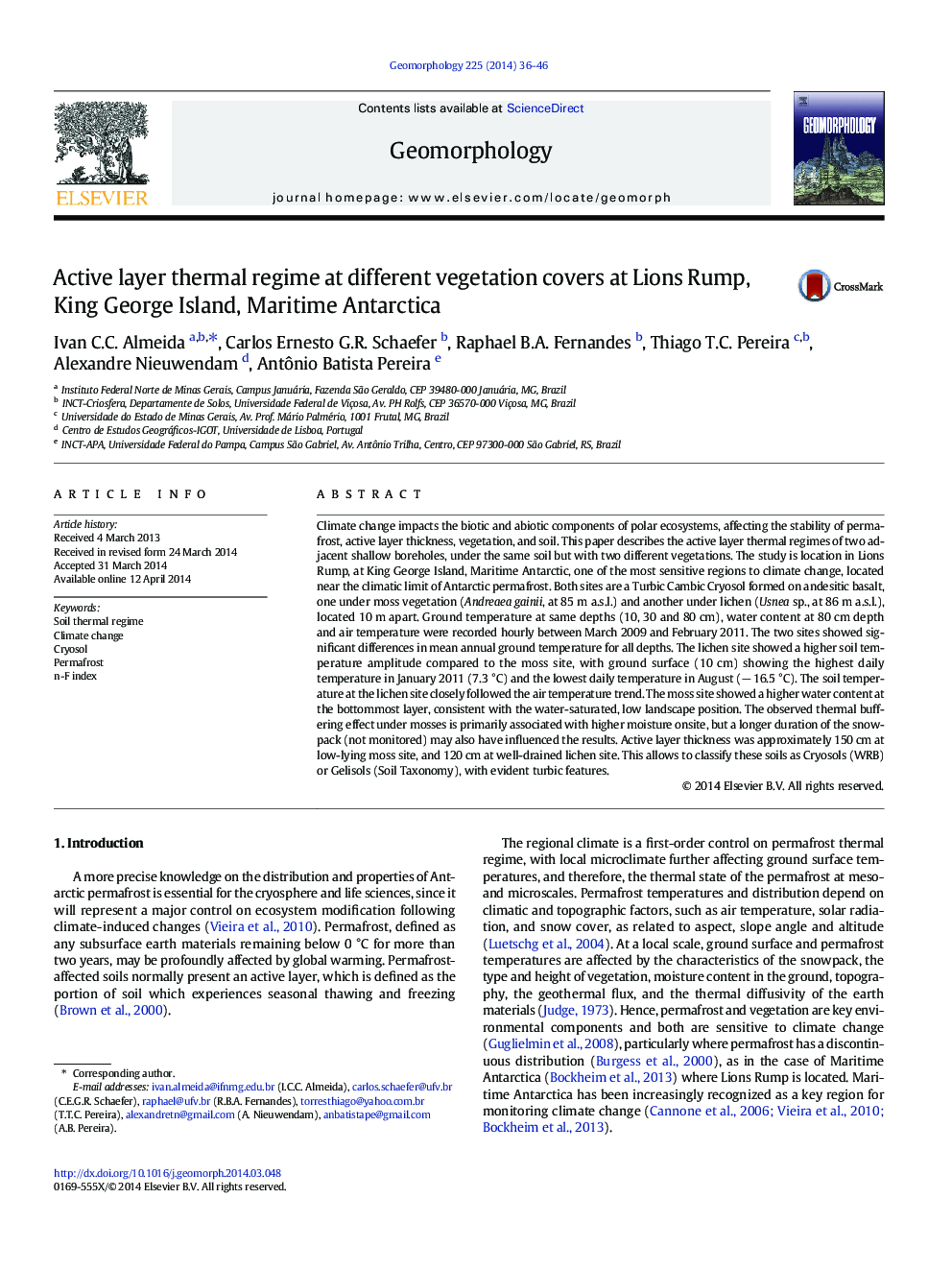| کد مقاله | کد نشریه | سال انتشار | مقاله انگلیسی | نسخه تمام متن |
|---|---|---|---|---|
| 4684465 | 1635424 | 2014 | 11 صفحه PDF | دانلود رایگان |

• Antarctic permafrost stability is affected by vegetation.
• The active layer thermal regime had low freezing and thawing regimes.
• The active layer thermal regime had low thermal apparent diffusivity.
• Active layer thickness was deeper under mosses, compared to lichen cover.
• The thermal buffering effect under mosses is associated with higher moisture.
Climate change impacts the biotic and abiotic components of polar ecosystems, affecting the stability of permafrost, active layer thickness, vegetation, and soil. This paper describes the active layer thermal regimes of two adjacent shallow boreholes, under the same soil but with two different vegetations. The study is location in Lions Rump, at King George Island, Maritime Antarctic, one of the most sensitive regions to climate change, located near the climatic limit of Antarctic permafrost. Both sites are a Turbic Cambic Cryosol formed on andesitic basalt, one under moss vegetation (Andreaea gainii, at 85 m a.s.l.) and another under lichen (Usnea sp., at 86 m a.s.l.), located 10 m apart. Ground temperature at same depths (10, 30 and 80 cm), water content at 80 cm depth and air temperature were recorded hourly between March 2009 and February 2011. The two sites showed significant differences in mean annual ground temperature for all depths. The lichen site showed a higher soil temperature amplitude compared to the moss site, with ground surface (10 cm) showing the highest daily temperature in January 2011 (7.3 °C) and the lowest daily temperature in August (− 16.5 °C). The soil temperature at the lichen site closely followed the air temperature trend. The moss site showed a higher water content at the bottommost layer, consistent with the water-saturated, low landscape position. The observed thermal buffering effect under mosses is primarily associated with higher moisture onsite, but a longer duration of the snowpack (not monitored) may also have influenced the results. Active layer thickness was approximately 150 cm at low-lying moss site, and 120 cm at well-drained lichen site. This allows to classify these soils as Cryosols (WRB) or Gelisols (Soil Taxonomy), with evident turbic features.
Journal: Geomorphology - Volume 225, 15 November 2014, Pages 36–46